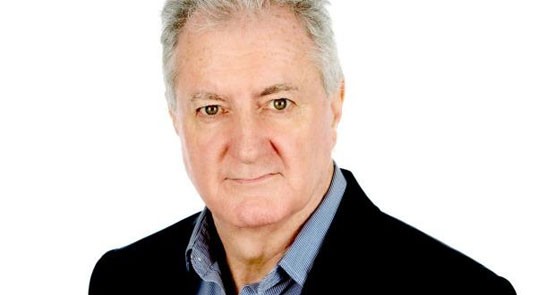
What does Paul Sheehan, who fairly recently committed “unacceptable breaches of fundamental journalistic practice”, have to say about media ethics? Quite a lot, it turns out. Your correspondent spent an afternoon reading his 2002 book, Electronic Whorehouse. For “fun”. And ironic potential.
“In the new technological marketplace, the potential for one person, any person, to propagate ideas to a large audience — or create mischief on a large scale — has increased exponentially,” the veteran writer (and magic water enthusiast), now stood down for the aforementioned unacceptable breaches, notes in his introduction:
“The lines between news, opinion and entertainment, between authority and celebrity, have been blurred or dismantled altogether. The most influential journalist in the English-speaking world is Oprah Winfrey. The most prominent journalist in Australia is Eddie McGuire.
“The only response that the quality media can have to this explosion of options, the cannibalisation of time, and the super-fragmentation of content, is to get better, to become islands of credibility in a sea of dross. This is not a new idea, but much of the traditional media has accelerated the process of its irrelevance by offering more of the same, and becoming more and more sensational.”
Sheehan holds the blowtorch to his own employer. One of the opening examples is about the culture wars that followed the publication of Keith Windschuttle’s The Fabrication of Aboriginal History. Sheehan savages The Age for following the claims of one of its columnists, Robert Manne, in making what Sheehan describes as a flimsy accusation of plagiarism against Windschuttle. Sheehan wrote:
“The Age didn’t just publish a fabricated comment on the front page, the whole controversy was confected out of the thinnest material, which melts away under scrutiny.”
There are also chapters on Fox News (which Sheehan says paradoxically made the media more fair, by providing an outlet for viewpoints not given in the mainstream media), the press gallery’s anti-Howard bias and Four Corners (which Sheehan says was uncritically pro-asylum seeker).
But most interesting, given subsequent events, is a chapter on the public vilification of Australian columnist Janet Albrechtsen.
In 2002, Albrechtsen, then fairly new to journalism, wrote an article about the role of Islamic culture in recent gang rapes. The column was torn apart by Media Watch (which ironically, Sheehan writes, had asked Albrechtsen to interview to be its new host only months before), leading to a flurry of criticism in other outlets (including Crikey).
But Albrechtsen was broadly correct, Sheehan writes. He cites a number of local sources, including Forbidden Love, the “true story” about a Muslim honour killing that took the world by storm at the time, before being found to be a fabrication (though Sheehan couldn’t have known this at the time).
Sheehan also cites a number of global sources about the problems of male Islamic violence. And this chapter makes the argument, rehashed in Sheehan’s disastrous Sydney Morning Herald splash last month, that the number of rapes by Muslim men in Sydney has been severely underestimated.
After a further reflection on Media Watch‘s tactics, which Sheehan decries, he ponders the effect on Albrechtsen:
“[Host David Marr’s] determination to disfigure the reputation of an ideological adversary led to a campaign in which more than a dozen men would circle, accuse and harass a young woman who they clearly regarded as an intellectual slut — ‘fast and loose with her sources’ were Marr’s words — someone who needed to be discredited, humiliated and, if possible, sacked.”
Albrechtsen’s career recovered and soared. It remains to be seen if Sheehan’s can do the same.








How can we ensure that Sheehan is NOT rehabilitated? He is a serial offender, with the hubris and self-delusion to think that everybody else is wrong, and that eventually they’ll realise this and restore him to his rightful place. His determination to rely on one or two sources, (people who will produce ‘research’ results that support his viewpoint), passes in his world for sound investigation and analysis. Well, no, it’s primarily on Planet Paul, and amongst still-naive first year university students that this is so.
I’m not suggesting a modern day Journalists Inqusition, with hot coals and shrieking high priests and priestesses denouncing the man and all his works, but a simple technique that my parents used successfully; summed up in the calm statement, “if you ignore him, he’ll probably just go away.”
“Soared:soured – Discuss”.
Love to know where to find the attmepted refutation of Sheehan’sMiracle Water journalism. I remember it well, the whole sad sorry stupid saga. Don’t know how it could be denied.
If Sheehan could recover from Miracle Water, it can recover from anything. The latest was stupid racism – Miracle Water was just beyond belief moronic and gullible.
.